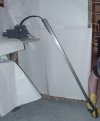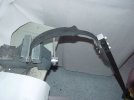I think this forum is the best resource for any lay person, like me, looking for a incredible huge boost in his knife knowledge. Here I've been learning a lot about steel, sharpening, convex grinding, and, of course, knife tests and impressions. And from here I took notice of other places where to look for more information. That's how I came to know Noss', Cliff's, and "the other" forum, among others.
Noss' test are great, IMHO. But as any other tests I've been seeing, like Cliff's and Vasily's, they are prone to put people into confrontation mode, including, sometimes, test devisers.
That's sad, because information is neutral, although conclusions might not be so.
Having said that, I think the Chinese knife question could be better handled by taking the "chinese" out of the equation. For example, talking about steel. It's 440 stainless. Cheaper than dirt site states:
"440A - 440B - 440C - All three resist rust well, with 440A being the most resistant and 440C the least. If your knife is marked with just 440, it is probably the less expensive 440A. In general the 440A is just good enough for everyday use, 440B is a solid performer and 440C being excellent." I think they extracted that, without quotation, from Joe Talmadge's Steel FAQ.
So that knife is 440A steel, probably.
Cliff says:
"Summary : 440A is a stainless steel generally chosen for cutlery which needs high corrosion resistance. It has a higher corrosion resistance than 12C27M and much higher primary carbide fraction and corrosponding increase in wear resistance and decrease in edge stability."
So, I think its fair to say that the CTD knife, heat treatment magic notwithstanding, is most certainly not comparable, edge retention wise, with Ranger's 5160.
On the other hand, one thing that I would like to see it's Noss sending the remains of his knives to someone well versed in metallurgy and knives, equipped with a materials analysis microscope. Now that would be something!


